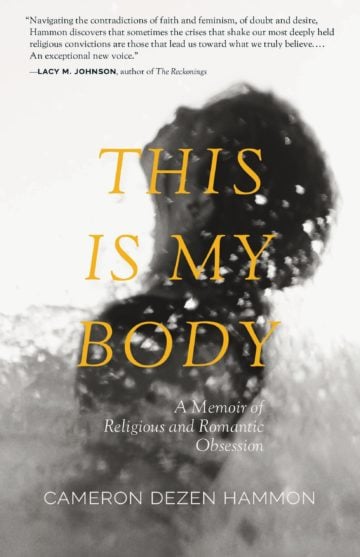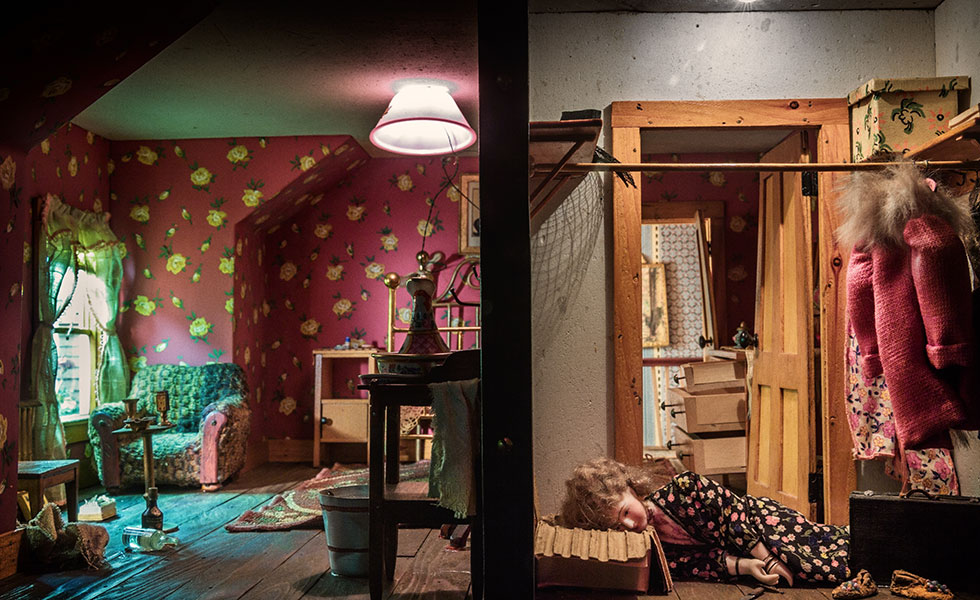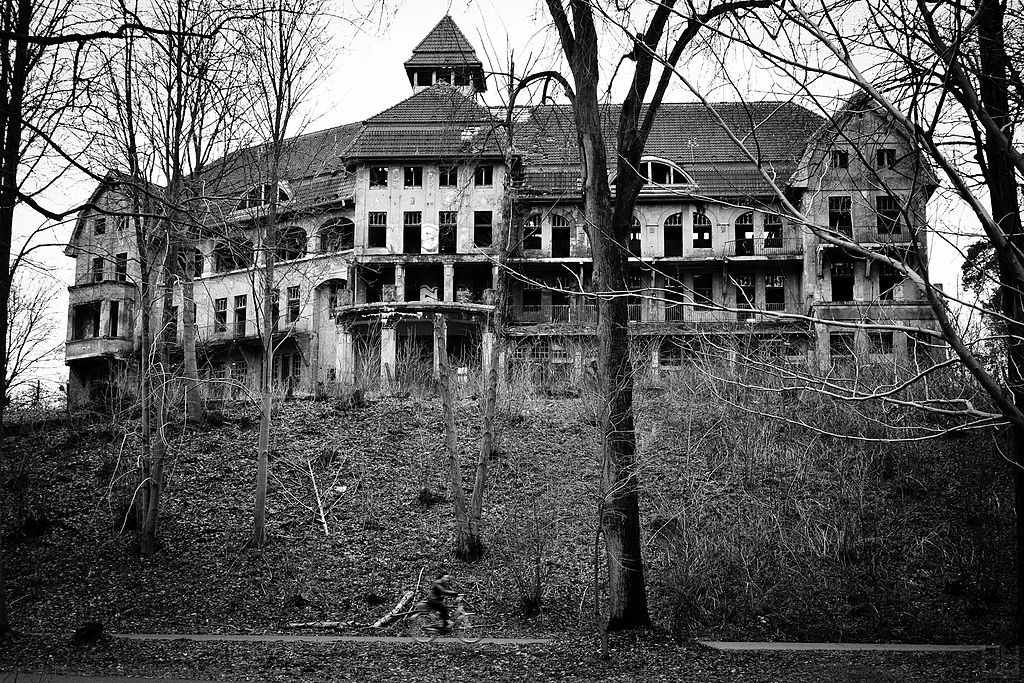
A Bold New Memoir Struggles to Reconcile Faith and Feminism
Cameron Dezen Hammon’s memoir asks how many ways there are to be a Christian woman—and explores the sexism deeply embedded in evangelical churches.
When Cameron Dezen Hammon first becomes a Christian at age 26, she tries to make sense of historical conflicts like the Crusades. How can God be good when his human representatives are so terrible? “God is not the church,” her spiritual mentor responds. “The church is made of people and people fail.”
These become prophetic words for Houston author Dezen Hammon, whose first book, This Is My Body: A Memoir of Religious and Romantic Obsession, traces her path through evangelical Christianity from enraptured conversion to gradual disillusionment. It’s a revealing letter from a believer who tries, and ultimately fails, to conform to the vision of Christian womanhood offered by one of the country’s dominant religions.

By Cameron Dezen Hammon
Lookout Books
208 pages; $17.95
Buy the book here.
Dezen Hammon grew up outside New York City in a predominantly Jewish neighborhood but a secular family. The author’s spiritual curiosity draws her first to the Jewish practice of her childhood friends and, later, to New Age ideas. In her mid-20s, while trying to launch a music career, she joins a scrappy, artistic house church. Dezen Hammon launches herself headlong into this strain of Christianity, studying the Bible, praying in tongues, swearing off premarital sex and liberal politics, and channeling her musical energy into worship.
After 9/11, she moves to Houston with the musician who will become her husband, and works as a singer and bandleader at evangelical churches. The work is at first fulfilling, but it becomes difficult to ignore the sexism that comes with the job. Male colleagues avoid one-on-one meetings. The men in her band won’t take direction from a female leader. A megachurch pastor gropes her backstage, and a male missionary literally sends her to the kitchen to make sandwiches instead of listening to her ideas.
Notably, the women in these churches reinforce traditional gender roles. Dezen Hammon even discovers that the decision to fire her from her music minister position at one megachurch was made by a committee of women who considered it unbiblical for a woman to lead. “It’s a sort of Stockholm syndrome, the willingness of evangelical women to uphold the system that represses them,” she writes. “I’ve done my fair share of upholding that system.” For years she swallows her objections, telling herself the church leaders know better.
Yet Dezen Hammon undersells herself. Her intelligence and perceptiveness are evident in her descriptions, which distill into words experiences many readers will instantly recognize. As she contemplates the possibility that there’s no afterlife, she reflects, “This is the first time I’ve allowed myself this level of doubt, allowed my mind to canter out into the field alone, without the leads of belief to rein it in.” She renders memorable images in luxurious turns of phrase: The lights on a bridge in Budapest “sparkle like diamond bracelets on a blue velvet sleeve.”
A woman capable of writing sentences like these does not need to limit herself to making the sandwiches. Dezen Hammon acknowledges that focusing on religious music “releases me, conveniently, from my battle with my own ambition.” She notes “the profound comfort that a structured worldview … can provide.” Is it easier to play the role of an obedient Christian woman than to boldly advocate for her own desires? Or is it that, for a long time, Dezen Hammon simply didn’t know there were other ways to be a Christian, ways it was possible to be a feminist and still believe?
Onstage at the suburban megachurch where the author works, she considers the image she must project: “I should look young, but not too young. I should look pretty, but not too pretty.”
While doubt burrows into the author’s religious life, fissures begin to appear in her marriage. Dezen Hammon and her husband struggle to communicate, and the author sinks into an emotional affair, conducted mainly via text, with a man from another town. This fantasy is intoxicating until its eventual, inevitable demise.
The title “This is my body” invokes words spoken by Jesus the night before his death, words echoed by ministers as they prepare the communion table. In some denominations those words are still spoken only by men, and Dezen Hammon’s book is a case study in the poverty of limiting church leadership to male bodies. As a woman, she experiences the ache of desire, the pleasure of sex, the exhaustion of postpartum anxiety, and revulsion at the pastor’s unwanted touch. But her religion has no forum for processing these gendered experiences. Onstage at the suburban megachurch where she works, she considers the image she must project: “I should look young, but not too young. I should look pretty, but not too pretty.”
As much as I appreciate memoirs, I often find their raw, confessional nature unsettling. This Is My Body has all that startling honesty, yet it lacks the expository prologue—the “why I had to write this”—that often precedes the opening chapter. On first read, I felt its absence as I tried to intuit the author’s motivation for writing the book.
I suspect Dezen Hammon has decided it’s worth sharing these intimate moments to foster an honest conversation about evangelical womanhood. This is not a niche issue: A quarter of Americans identify as evangelical Christians, and the church has significant political clout. For evangelical Christians who, like the author, struggle to be both believers and feminists, Dezen Hammon’s story offers hope and validation. For those outside the church, the book is an edifying behind-the-scenes tour.
Dezen Hammon ultimately seeks a spiritual community with “more room for [her] to be human.” At an Episcopal church she begins to recalibrate her understanding of what it means to be Christian. Thank God the author emerged from her crucibles with the desire to write about them. The world needs to hear what Dezen Hammon has to say now that she’s been born again.
Read more from the Observer:
-
Who Is John Cornyn Serving?: The senior senator from Texas has mastered the art of political subservience, making him very powerful—and perhaps vulnerable.
-
A Joyful El Paso Art Exhibit Imagines a World Ruled by Latinx People: From a cosmic piñata to “Aztechnonauts,” sculptor Angel Cabrales envisions an alternate history defined by Latinx creativity.
-
Short Story Finalist: ‘The After Party’: In Jess Smith’s tense and troubling story, a wedding party turns dark.


